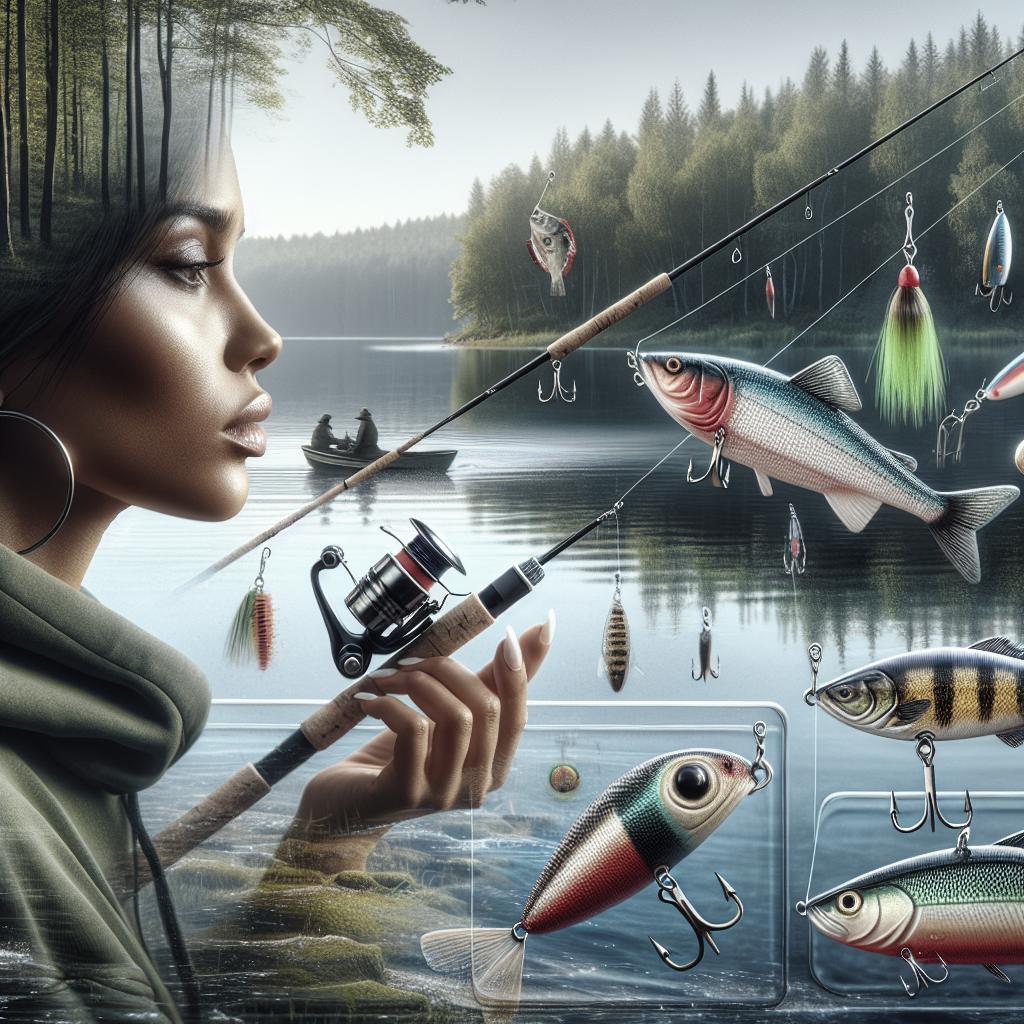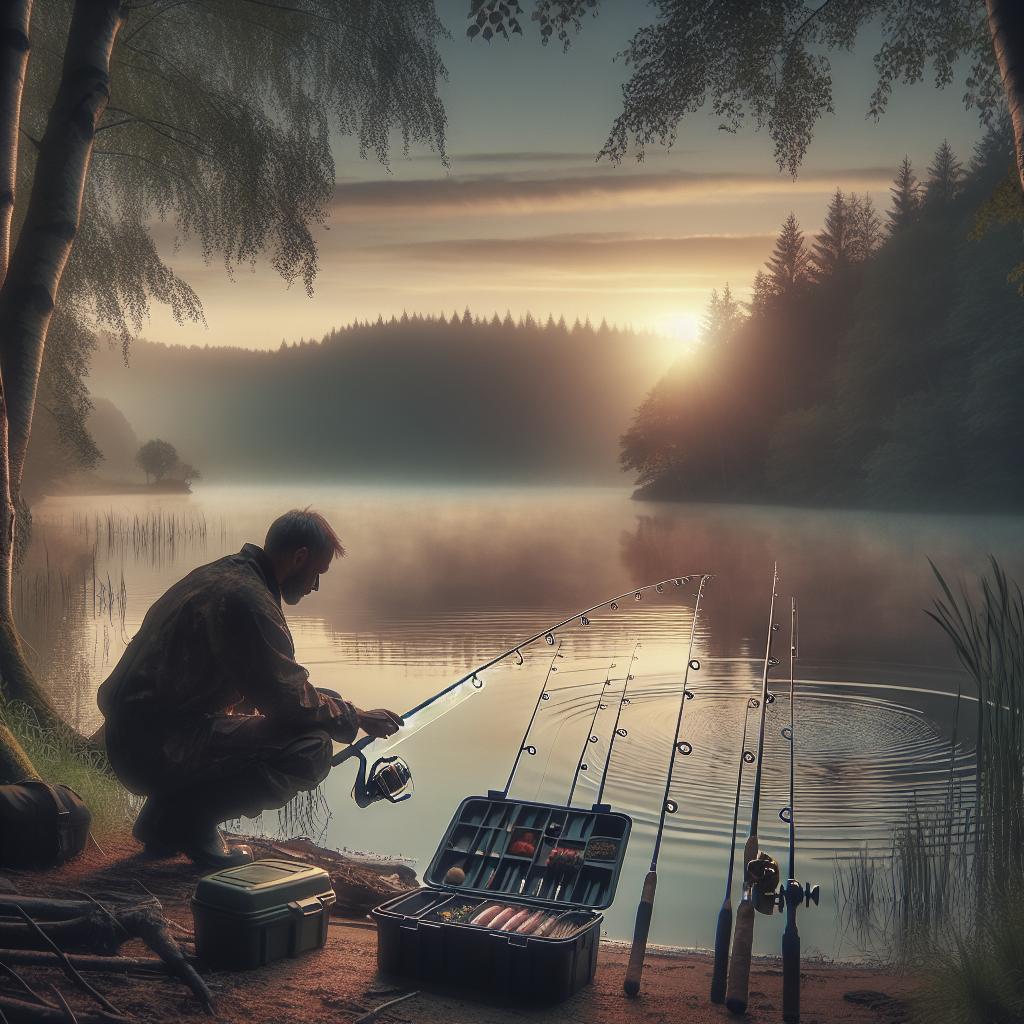“`html
How to Fish with Lures: A Comprehensive Guide
Fishing with lures can be an exciting and rewarding experience, offering anglers the thrill of the chase and the joy of a good catch. Whether you’re a novice angler or a seasoned veteran, understanding the nuances of lure fishing can enhance your success on the water. This guide dives into the tips and tricks essential for lure fishing, explores how to choose the right lure based on depth and type, demonstrates secure methods to attach lures, delves into various fishing techniques, and offers indispensable tips to maximize your catch. Read on to discover how you can refine your skills, broaden your tactics, and make the most of your time out on the water with lure fishing.
The Tips & Tricks of The Trade
To excel in lure fishing, it’s essential to get acquainted with the intricacies that make the practice both an art and a science. Recognizing the behavior of your target fish species and understanding how different environmental factors influence them is paramount. Weather changes, water temperature, and seasonal patterns all play a crucial role in how fish respond to various lures, giving you better chances of a successful catch.
Adaptability is key. The ability to shift techniques or alter your approach when conditions change can be the difference between a productive day on the water or heading home empty-handed. Practice patience and learn to read your surroundings, such as observing the water clarity and identifying structures where fish might hide, like rocks, grass beds, or undercut banks.
Picking a Lure
By Depth:
The depth at which you intend to fish significantly influences your choice of lure. Surface lures, such as poppers and frogs, work well in shallow waters and areas with heavy vegetation. They create ripples and noise that attract fish. For mid-water layers, using crankbaits and spinnerbaits allows you to cover different depth ranges effectively, with crankbaits diving to a specific depth based on design and retrieve speed.
If you’re targeting fish hanging out at the bottom, opting for jigs and swimbaits can be beneficial. These present a more lifelike movement close to the lake or riverbed, enticing bottom-dwelling species.
Most Common Classic Fishing Lures:
There are several types of classic fishing lures that every angler should consider stocking in their tackle box. Spinners are known for their versatility, spinning blades that create vibrations attractive to various fish species. Poppers create surface commotion, mimicking injured prey and drawing attention.
Spoons, designed with a shiny, curved appearance, mimic smaller fish movements, and are excellent for catching larger predator species. Soft plastic worms are favored for their flexibility and natural presentation, making them a staple when fishing in freshwater environments with tricky cover and structure.
Attaching the Lure
Attaching the lure with a knot:
The strength and security of your knot can directly affect your success rate in landing fish, making it essential to master a few reliable knots for different scenarios. Ensuring your knots are tied correctly and securely will prevent the frustrating loss of tackle and perhaps the catch of a lifetime.
Practice tying knots at home to gain confidence. When heading to fish, ensure you have the right tools on hand, such as pliers and a knot tying tool, to make adjustments quickly and efficiently on the water.
Improved Clinch Knot:
The improved clinch knot is a staple among anglers due to its simplicity and reliability for most fishing lines. Begin by threading the line through the lure’s eye, making five to seven turns around the standing line before passing the tag end through the loop.
This knot is especially suitable for light to medium fishing lines and works best when properly lubricated before tightening to prevent friction, which can weaken the line.
Double Uni-Knot:
The double uni-knot excels in connecting two different lines, such as tying a leader to your mainline, making it particularly useful when different components in your setup require a secure connection. It’s favored for its ability to maintain a high line test under pressure.
Start by overlapping the two line ends, creating loops with each line end, and wrapping around them tightly. Lubricate and pull the standing lines apart to tighten, capturing each knot against its counterpart for a seamless bond.
The Palomar Knot:
The palomar knot is hailed for retaining nearly 100% of the original line strength, making it an excellent choice for braided and monofilament lines. Double the line, pass it through the lure eye, and tie an overhand knot with the doubled line, then loop the lure through it.
One of the primary benefits is the ease with which it’s tied in low light conditions, ideal for early morning or evening fishing when vision can be limited. Always ensure it’s properly seated on the eye of the lure to prevent slip-off.
Different Lure Fishing Techniques
Walk The Dog:
This technique involves making your surface lure mimic the erratic motion of a fleeing baitfish, enticing strikes from predator species like bass. Start by casting your lure out and keeping your rod tip down, then gently twitch the rod while retrieving to create a zig-zag motion.
Mastering this technique requires practice to achieve the right rhythm and pace. Experiment with retrieval speeds to see what triggers more strikes, paying close attention to how the fish are reacting on any given day.
Trolling:
Trolling involves dragging lures behind a moving boat at various speeds and depths to cover a large swath of water. This method is often used in open water, targeting more prominent species like trout and salmon. The key is to maintain a speed that mimics natural prey, typically between 1.5 and 3.5 mph.
Use downriggers or planers to vary the depth of your presentations. Trolling allows you to present lures at different depths simultaneously, increasing your chance of running across active feeding zones.
Cast & Retrieve:
The cast and retrieve technique is straightforward—cast your lure to a targeted area and retrieve it at a varying speed and action to imitate natural movement. This versatile technique is effective for various species and can be adapted by altering the speed, depth, and action during retrieval.
To enhance your success, alternate between fast and slow retrieves, or add pauses to simulate an injured or erratic prey, which can entice predatory fish to strike when they might seem uninterested otherwise.
Lure Fishing Tips
Use Various Types of Lures:
No single lure can catch every fish every time, so having a diverse selection adapted to different conditions and behaviors is critical. Experimenting with various colors, sizes, and actions can dramatically affect your catch rate, as fish may respond differently depending on the day or waterbody.
Think seasonally. Bright colors often perform well in murky waters, while more natural colors can be effective on clearer days. Keeping an assortment of lures builds flexibility to match conditions and target specific fish preferences.
Cover a Large Area:
Covering more water increases your chances of finding active fish. Using techniques that allow you to spread out your fishing, such as casting wider angles or trolling, lets you explore different depths and structures.
Make use of technology, like fish finders and GPS, to identify potential hotspots and map your fishing paths. Rotating your coverage and hitting promising areas from various angles can further optimize your results.
Use the Right Gear:
Selecting the correct rod, reel, and line type correlates with the success and efficiency of your luring strategy. Ensure your rod is rated for the lure weight, and consider the action and power needed for the species you’re targeting and conditions you’ll encounter.
Choosing between spinning and baitcasting reels depends on personal comfort and the technique employed. Braided line offers sensitivity and strength, ideal for distinct strikes during lure fishing, whereas monofilament provides greater stretch and is useful in specific situations.
Lessons Learned
Lure fishing is a rewarding pursuit that combines strategy, skill, and patience. By honing your knowledge of lure types and fishing techniques and mastering practical knot tying, you can significantly improve your success and enjoyment on the water. Continual learning and adaptation are vital as conditions and fish behavior change throughout the season. Happy fishing!
| Aspect | Details |
|---|---|
| Tips & Tricks | Adapt to conditions, observe environment, be patient |
| Picking a Lure | Consider depth, use classic lures like spinners and spoons |
| Attaching Lure | Master various knots like Improved Clinch, Double Uni, Palomar |
| Lure Techniques | Walk The Dog, Trolling, Cast & Retrieve |
| Fishing Tips | Experiment with lure types, cover more area, use proper gear |
“`


